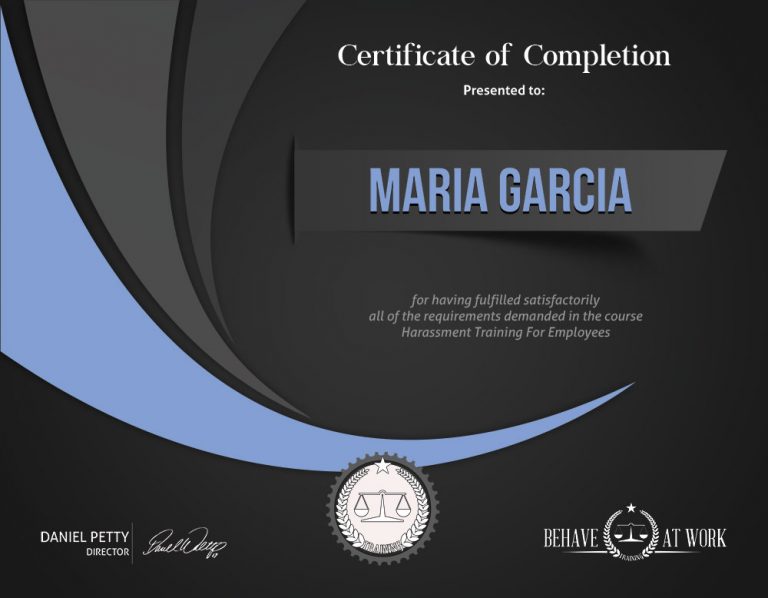U.S. Federal laws prohibit workplace discrimination and workplace harassment. These laws are enforced by the Equal Employment Opportunity Commission (EEOC). Sexual harassment creates a hostile work environment and is the most common type of workplace harassment or discrimination in the workplace. Many workers have experienced some form of sexual harassment in the workplace. It is unlawful to harass a person because of that person’s sex. Harassment can include “sexual harassment” or unwelcome sexual advances, requests for sexual favors, and other verbal or physical harassment of a sexual nature. Employers prefer hiring job applicants that have sexual harassment training, applicants trained in avoiding sexual harassment in the workplace, and therefore avoiding damage to employee morale, productivity, and costly lawsuits. By studying and successfully completing our harassment prevention training you can show current and/or future employers that you have been trained and therefore less likely to victimize other employees, damage the company’s culture, and become a liability for the company.
Employers care deeply about preventing harassment because harassment is wrong – and, in many cases, it is against the law. A variety of damages can occur as a result of workplace harassment – occupational, psychological, physical, and economic damage that often destroys the lives of employees. Employers also care about preventing harassment in the workplace because it makes good business sense. The direct financial costs, time, energy, and resources that get diverted from the normal business operation, when having to deal with harassment complaints, legal representation, litigation, settlements, and court awards, is enormous. Harassment training for employees should be required for all employees in order to better understand what constitutes sexual harassment and how to avoid a hostile work environment. Sexual harassment may include sexual advances that are unwelcome by the recipient, requests for sexual favors, and other physical or verbal harassment of a sexual nature. Workplace harassment and discrimination in the workplace are some of the most prolific areas of employee abuse for which employers have an affirmative duty to investigate and deal with appropriately. Sexual harassment is usually defined using two types: “quid pro quo harassment” and “hostile environment harassment.” We offer online sexual harassment training for employees in all 50 states. Study our online sexual harassment course and receive a certificate after successful course completion. Employers prefer employees that are trained in how to avoid sexual harassment in the workplace.
What actually constitutes sexual harassment in the workplace can often be confusing. A person becomes a victim when on the receiving end of sexual conduct that is unwelcome or unwanted and occurs frequently and/or is very serious. An important factor is whether the victim by his or her conduct indicated that the sexual advances were unwelcome. Because sexual attraction may sometimes be present in the day-to-day social exchange between employees, the distinction between welcome and unwelcome sexual behavior and/or advances may sometimes be difficult to determine. The harasser may be the owner of the company, a supervisor, co-worker, or even a customer of the company. The harasser may be female, male, or transgender, and the person being harassed may be the same sex, the opposite sex, or transgender. The offending sexual conduct may come in many forms including physical harassment, verbal harassment, in pictures, or in written form. A hostile work environment or intimidating workplace caused by illegal sexual harassment hinders an employee’s job performance. Study our sexual harassment training online course and get certified now. Online harassment training is very convenient!









